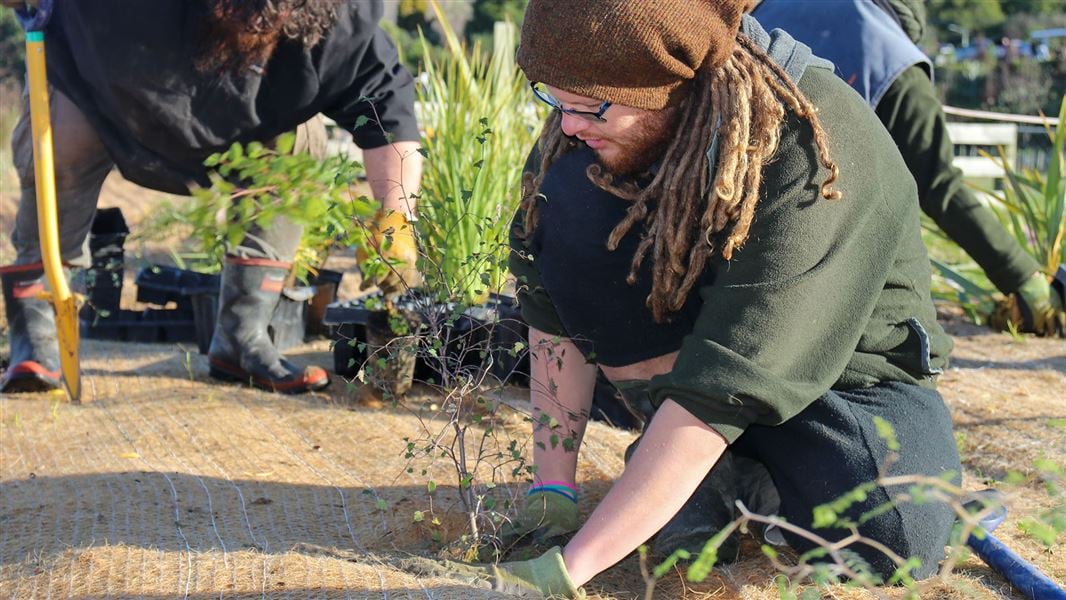Archived content: This media release was accurate on the date of publication.
Date: 03 July 2024
The project, a collaboration between the DOC, the marae, and Horizons Regional Council, is creating 500 m additional spawning habitat for atutahi.
DOC River Ranger Jane Taylor says the work began in response to a survey showing just how little spawning habitat was available in the lower Whanganui River.
“Through a series of hui and site assessments the riverbank beside Te Ao Hou was identified as a place suitable for a collaborative restoration project.”
“It has been truly collaborative in the way neighbours and our many contractors have worked closely with the marae to agree on an approach.”
“The first step was to remove willows, pampas and other weeds before reshaping the bank to reduce steepness. A gentler slope means more area is underwater in the big spring tides when atutahi lay their eggs,” says Jane.
The earthworks revealed some surprises.
“When preparing the site, we discovered the area was used in the past as an informal tip. Contractors had to take over 30 loads of rubbish to the dump.”
Despite the setback, restoration efforts continued recently with a community planting day at the marae. Over 2000 native plants will help stabilise the bank and provide spawning habitat.
Geoff Hipango, kaitiaki at Te Ao Hou marae, is excited to see the continuation of riverbank restoration which has been part of their vision for the marae. The involvement of DOC and Horizons Regional Council has helped speed up the work.
Geoff says the restoration project is a win-win for the marae, thanks to the use of Whanganui tribal knowledge systems, science, and collaboration with the community.
“Healing the river is also healing for us. We want to create a paradise,” says Geoff.
“If we lay the groundwork, the next generation will hopefully inherit an awa that’s in better condition. Ko te awa te mātāpuna o te ora – the river is the spring of our wellness. Not just for our people but for the river herself.”

Aerial view of the restoration area on the banks of the Whanganui River
Image: Horizons Regional Council
Background information
DOC is working in a partnership with others to restore the Whanganui River catchment under its Ngā Awa river restoration programme. The programme focuses on restoring 14 priority river catchments around the country.
Contact
For media enquiries contact:
Email: media@doc.govt.nz
